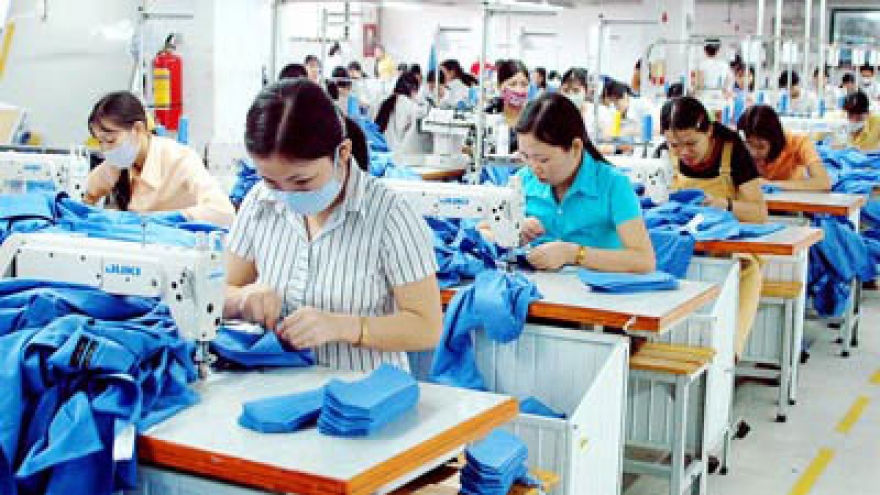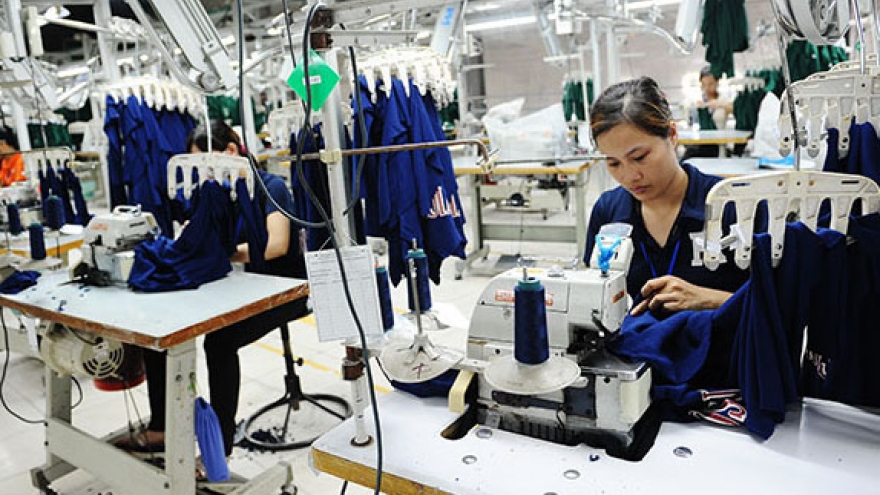Are foreigners cornering Vietnam’s clothing and textile market?
VOV.VN - Vietnam’s clothing and textiles industry has recorded average annual growth of 15% over the past five years and experts anticipate this trend to continue in the near term with gross export revenue reaching a record high US$30 billion by 2020.
Substantially, all of the past growth has been thanks to foreign manufacturers relocating existing facilities to the Southeast Asian nation to take advantage of lower labour costs and capitalize on the benefits of free trade agreements (FTAs).
More specifically, the EU, the second largest export market, accounts for a 20% share of the Vietnam clothing and textile export market. A recently signed free Vietnam- EU trade deal is projected to result in billions of dollars of increased exports through 2020.
A second free trade deal between the Republic of Korea (RoK) and Vietnam is also projected to positively boost the industry’s exports by billions of US dollars as well as a third trade pact with the Eurasian Customs Union (ECU).
Of course the earnings on these increased sales will inure primarily to foreign invested businesses and their shareholders— and to Vietnam in terms of increased numbers of good middle-income paying jobs.
According to official statistics, the industry currently employs 7.7 million workers in roughly 4,000 companies and the continued projected growth over the next few years readily translates into thousands more good paying jobs for Vietnamese workers.
 |
FTAs generally benefit foreign invested companies in Vietnam through reduced preferential tariffs, less expensive raw materials and supplies, and loosening of other restrictive trade barriers.
As a result of these free trade agreements and the potentiality of the much talked about Trans Pacific Partnership (TPP), it is widely reported in the global media that foreign investors, especially Chinese, are now attempting to corner the Vietnam clothing and textile market.
The media reports say, they are purchasing domestic companies mostly small factories comprised of production workshops, a security room, a canteen and break room located in cities and industrial zones with advantageous transport conditions.
The trend has gathered momentum to such an extent that the view is emerging that foreign invested companies, and not Vietnam’s domestic clothing and textile industry, would benefit more from the TPP than the domestic economy, should it ever materialize.
With their powerful financial capability and experience, foreign clothing and textile manufacturers are taking over Vietnam’s domestic businesses precisely to position themselves to benefit from the TPP.
About 70% of Vietnam’s clothing and textile exports are currently produced by foreign invested companies, which demonstrates their large operating scale and the big role they play in the industry.
In time, the reports say, foreign owned companies will make up an even larger percentage of the industry, while Vietnamese domestic businesses will continue to dwindle in number and see their market share shrink.


